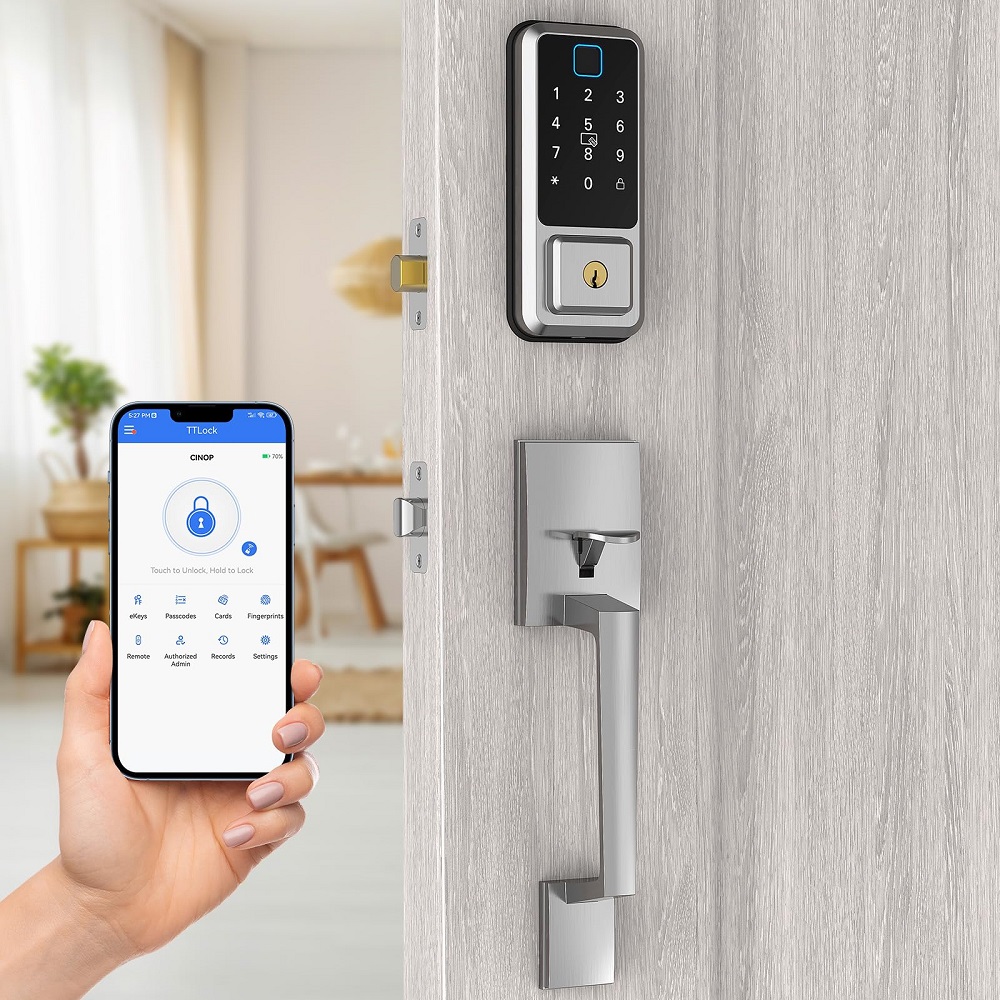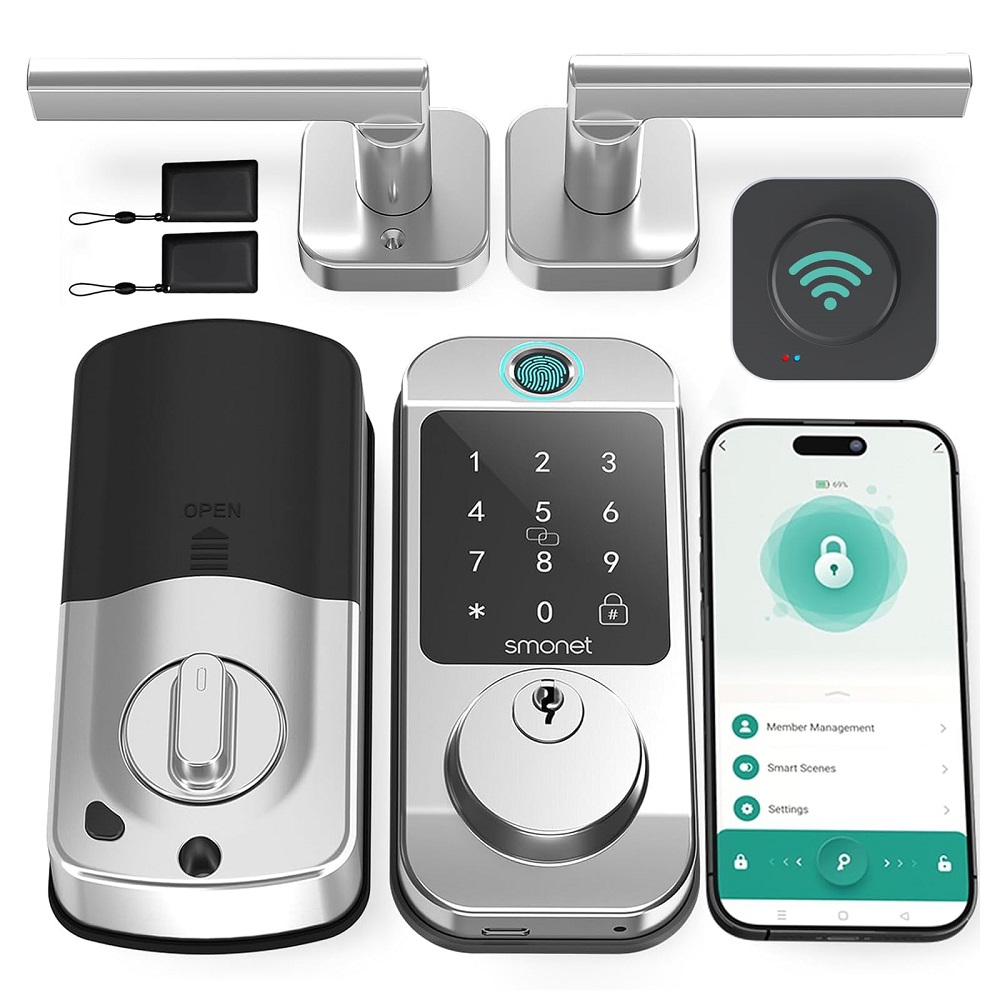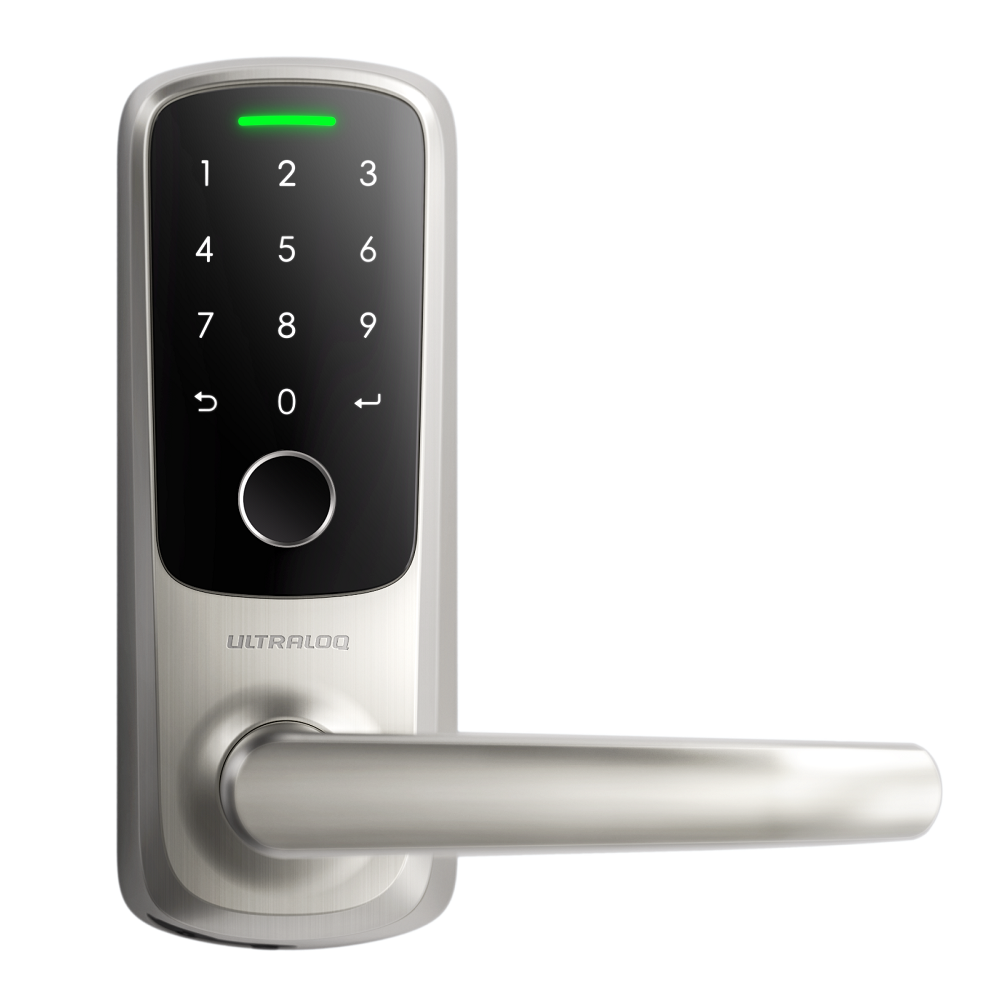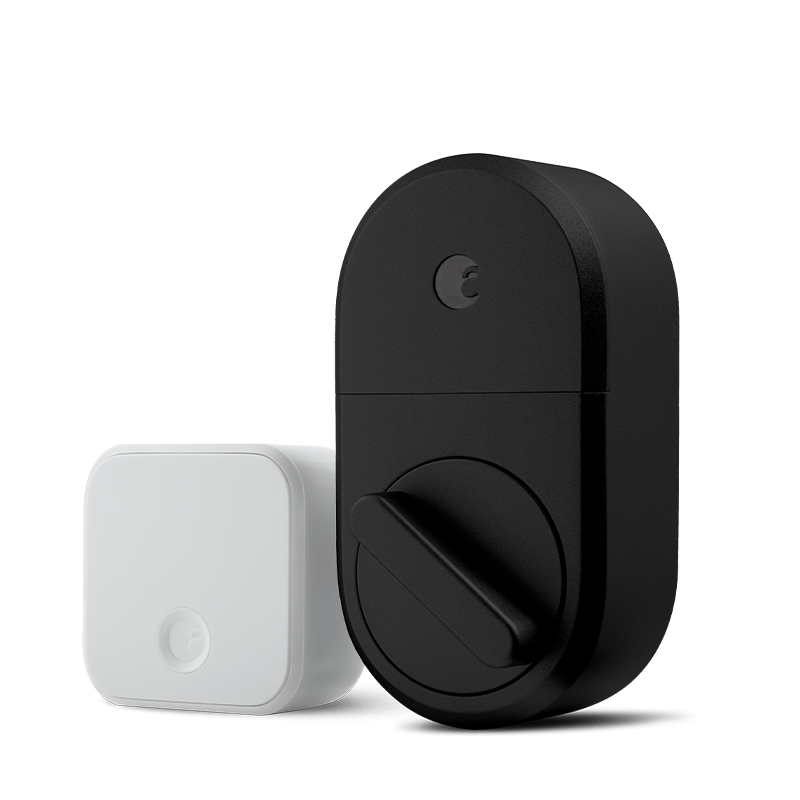Introduction to Smart Lock Security
As homeowners seek more advanced security, smart locks safe are becoming the preferred choice. They offer high-tech features beyond traditional locks. These features boost safety while providing convenience.
Smart locks safe come with encryption, keyless entry, access control, and two-factor authentication. It’s important to understand how these contribute to security.
Encryption protects data, making it hard for intruders to gain access. A keyless system means no physical keys that can be lost or stolen. Access control allows specific permissions for users. Two-factor authentication adds an extra security layer.
While smart locks may face hacking risks, proper measures can reduce these threats. Manufacturers play a key role by providing updates and ensuring robust security standards.
Integrating smart locks with home security systems can enhance protection. Remote monitoring and compatibility with existing systems adds layers of security.
Lastly, advancements continue to strengthen smart lock safety. Biometric authentication, artificial intelligence, and blockchain technology offer future improvements.

Keyless Entry and Convenience
Keyless entry transforms home access, offering unmatched convenience and enhanced security. With smart locks, the need for physical keys becomes obsolete. These locks use technology for access, including smartphone apps, numeric codes, or biometrics like fingerprints.
No more fumbling for keys in your bag or worrying about losing them. You simply enter a code or use your phone to unlock your door. This is especially helpful when your hands are full or in bad weather.
Smart Apps and Numeric Codes
Many smart locks connect to smartphone apps. This lets you unlock the door with a tap on your screen. Numeric codes offer another layer of convenience. You can share codes with family or trusted friends, eliminating the risk of copied keys.
Biometric Access
Biometrics like fingerprint scanners add further security and convenience. Only recognized fingerprints will unlock the door, which means each entry is personalized and secure.
Guest Access Made Easy
Smart locks are great for giving temporary access to guests. You can set temporary codes that expire after a set period, making managing access simple.
Smart locks bring a mix of ease and advanced security to your doorstep. They are part of a new wave of home security that adapts to your lifestyle.
Encryption and Data Protection
Encryption serves as the backbone of smart lock security. This feature encodes data, making it tough for intruders to decipher information during transmission. When a smart lock and your device communicate, encryption scrambles the data. This ensures only authorized devices can read it.
How Encryption Works
Encryption uses complex algorithms to transform readable data into a secure format. A key, known only to your device and the smart lock, unlocks this data. Without the key, the data looks like random characters, making unauthorized access nearly impossible.
Importance in Smart Locks
Smart locks handle sensitive data, such as access codes and entry logs. Encryption shields this information from hackers. Each time you unlock your door, the data remains hidden from prying eyes. This keeps your home security details safe.
User Responsibility
Users also play a part in maintaining security. It is vital to keep your apps and lock firmware up to date. Updates often include new encryption standards to combat the latest threats. Regular updating helps maintain a robust defense for your smart lock.
The Advantages Over Traditional Locks
Unlike traditional locks, where physical keys can be copied, encryption offers a more advanced safeguard. Keys for smart locks are digital and continuously changing. This makes it much harder for someone to gain unwanted entry.
Encryption is not just a technical feature. It’s a peace-of-mind promise that smart lock users can trust to keep their homes secure. By choosing a smart lock with strong encryption, you are taking a significant step in protecting you and your family.

Two-Factor Authentication and Access Control
Two-factor authentication (2FA) and access control are key to smart lock security
Understanding Two-Factor Authentication
Two-factor authentication adds a extra safety layer. When you unlock the door, it needs two forms of ID. This might be a code plus a fingerprint, or a phone notification. It makes getting in harder for intruders.
The Role of Access Control
Access control lets you manage entry permissions. You decide who enters your home and when. It can be set to allow certain people at set times. It can also provide or deny access remotely.
You can make temporary codes for visitors, like workers or friends. Access logs tell you who comes and goes.
Together, these features make smart locks a secure choice for home safety.
Vulnerabilities and Hacking Risks
When considering smart locks, it’s crucial to assess potential vulnerabilities and hacking risks. While smart locks are advanced, like any tech, they’re not foolproof. Yet, knowing the risks can lead to better protection.
Identifying Potential Weaknesses
Smart locks may have tech glitches or software bugs. These can open doors to hackers. It’s important to learn about these weaknesses to stay safe. Reputable manufacturers will update their systems, fixing known issues.
Hacking Risks and How to Mitigate Them
Hackers could attempt to access smart locks. Strong passwords and changing them regularly help prevent this. Two-factor authentication is another shield against unwanted access. Keep software and apps updated to avoid vulnerabilities.
The Role of Encryption in Protecting Against Hacks
Encryption is a smart lock’s defense, making data tough for hackers to read. Always check that your lock uses strong encryption to protect your home.
User’s Role in Security
Users must act responsibly. Maintain strong, unique passwords for lock apps. Enable two-factor authentication. Regularly update software. These steps help keep your smart lock secure.
While are smart locks safe overall, some risks exist. Yet these can be managed with diligence and proper tech use. By understanding how to protect against hacking, users can enhance the security of their smart locks.

Integration with Home Security Systems
Integrating smart locks with home security systems boosts home safety. When connected, smart locks add extra security layers. These systems work together to keep homes safer and more secure.
Smart Locks and Seamless Security System Integration
Smart locks can link with security systems. This lets them work seamlessly together. Users enjoy more control over their home security. They can manage access and monitor security from one place.
Remote Monitoring Enhances Security
Remote monitoring is a key benefit of integration. Homeowners can check their lock status from anywhere. This feature allows users to lock or unlock their doors remotely. It adds convenience and peace of mind.
Smart Home Ecosystem Connectivity
Smart locks fit into broader smart home systems. This lets homeowners control lights, locks, and alarms together. A centralized system offers better management and heightened security.
By integrating smart locks with security systems, homeowners gain proactive protection. They stay a step ahead of potential security threats. Overall, smart locks prove safe when paired with complete security systems.
The Role of Manufacturers in Smart Lock Safety
Manufacturers play a crucial role in ensuring smart lock security. They design, develop, and test these devices for robustness. By adhering to high industry standards, they guarantee product reliability.
Implementing Strong Security Features
Manufacturers focus on incorporating advanced security features in smart locks. This includes encryption, two-factor authentication, and access control options. These features prevent unauthorized access and data breaches.
Providing Regular Updates
Manufacturers must offer regular software updates. These updates fix vulnerabilities and enhance security features. Staying updated helps maintain strong defense against potential hacking.
Testing for Vulnerabilities
Serious testing helps manufacturers identify and resolve any security flaws. They simulate various attack scenarios to ensure smart locks can withstand real-world threats. Rigorous testing reflects a commitment to user safety.
Clear Installation and Maintenance Guidelines
Manufacturers provide detailed installation instructions. They also guide users on proper ongoing maintenance. Clear guidelines help users ensure optimal operation and security of their smart locks.
Manufacturers ensure that their smart locks are trustworthy and secure through extensive testing, updates, and strong security measures. By choosing products from reputable manufacturers, users can enhance the overall safety of their homes.
Advancements in Smart Lock Technology
As we look to the future, smart lock technology continues to evolve. This tech aims to further enhance security and convenience for homes everywhere. Let’s look at the newest advancements helping to boost smart lock security.
Biometric Authentication
Biometric authentication uses unique physical traits for access. Examples include fingerprint and facial recognition. These methods are tougher to fake, making access more secure. However, users should consider possible security issues like spoofing.
Artificial Intelligence (AI)
AI boosts smart lock security by identifying unusual activities. It uses algorithms to detect potential threats and alert homeowners. Continued AI developments will likely increase smart lock effectiveness.
Blockchain Technology
Blockchain could change how smart locks work. It provides a secure records system for access logs. This helps in verifying and auditing access, creating a more secure environment. In time, blockchain may play a bigger role in smart lock security.
These technologies promise to make smart locks even more secure and convenient. By staying updated with these advancements, homeowners can better protect their homes.
Final Thoughts on the Security of Smart Locks
Smart locks offer enhanced security compared to traditional locks. They bring keyless entry, encryption, and smart features into home security. Many smart locks use biometric data for added safety. They also use encryption to protect personal data from hackers.
Smart lock makers regularly update software to stay ahead of potential threats. They also develop new security features to block unauthorized access. Users can improve security by maintaining strong passwords and using two-factor authentication. The integration with home security systems further boosts their safety.
Despite the advantages, smart locks carry some risks. Potential hackers are always a concern. Yet, users can reduce these risks by following manufacturer guidelines and integrating smart locks with robust home security systems.
To sum up, smart locks safe in 2023 provide a higher level of security than traditional locks. As technology advances, so does the safety of these innovative devices. Homeowners who stay updated on the latest advancements will keep their homes safer and more secure.
